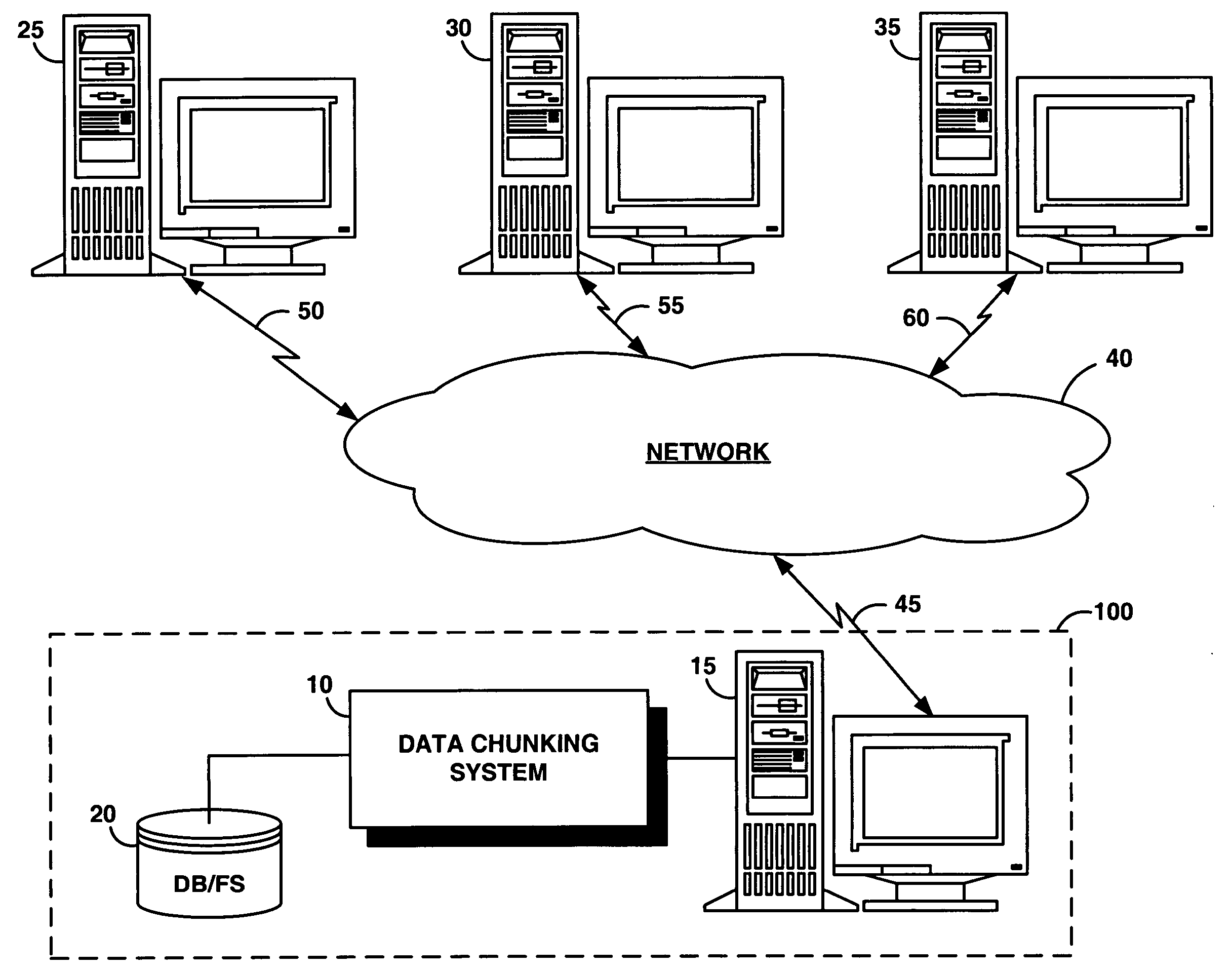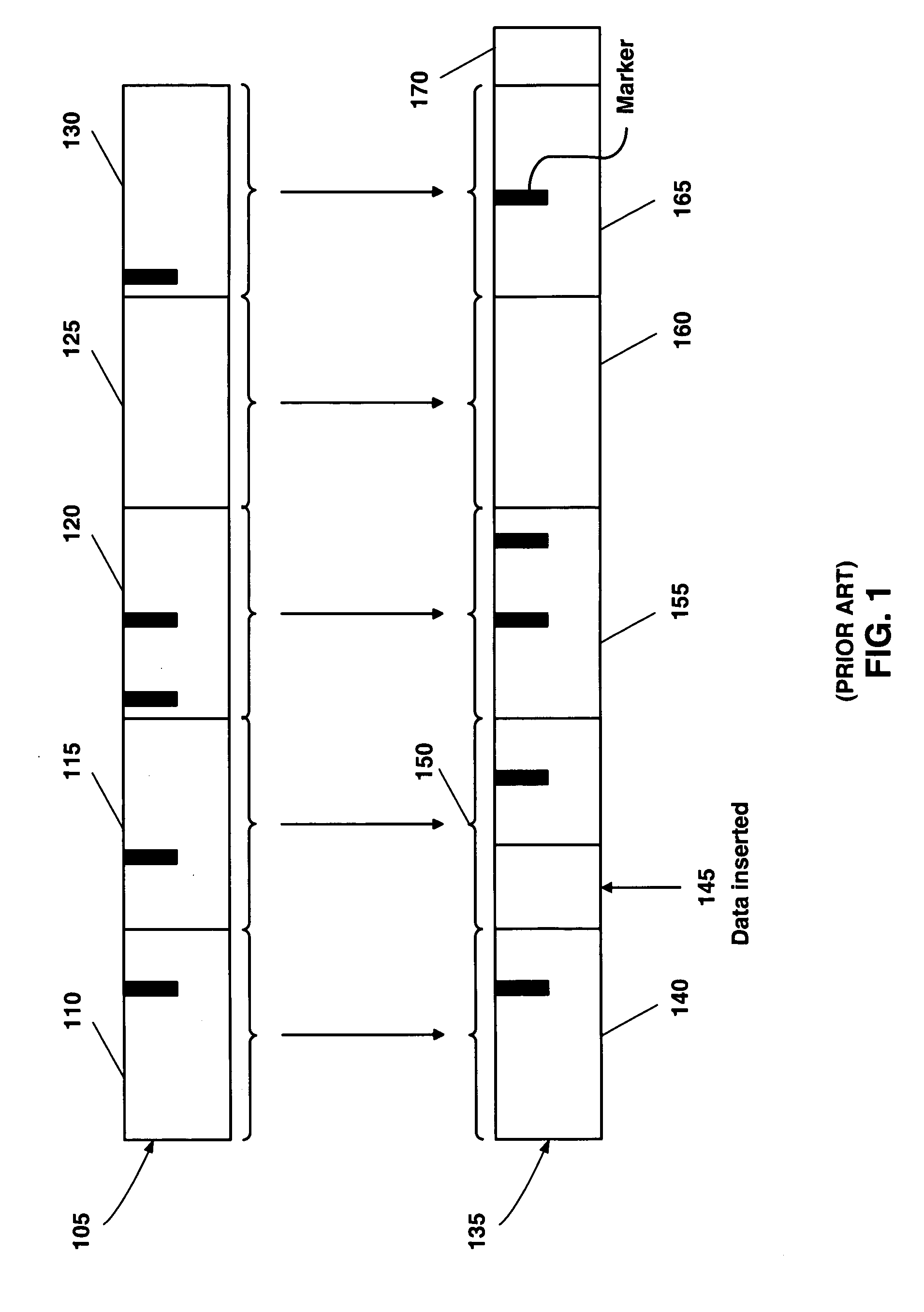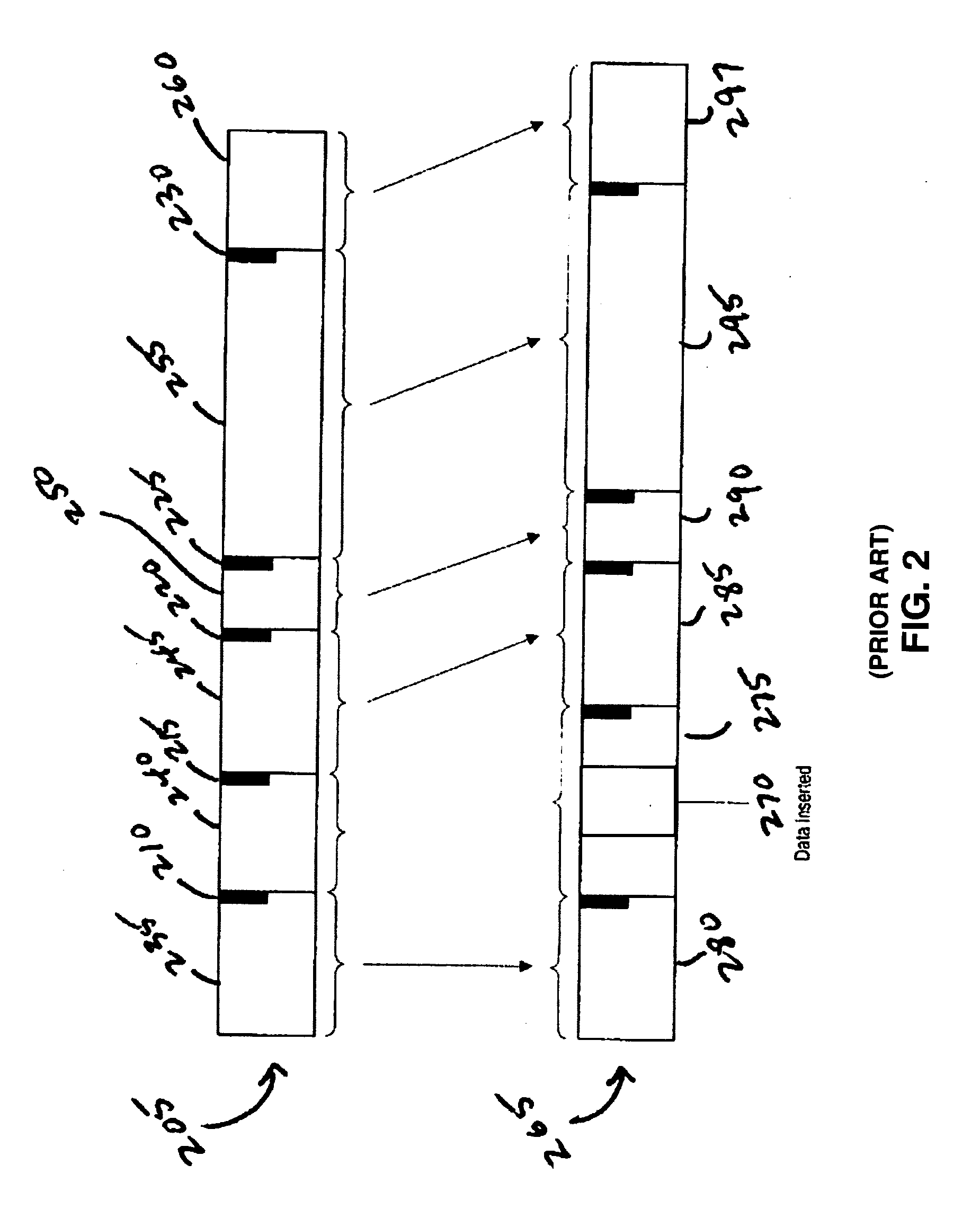System and method for dividing data into predominantly fixed-sized chunks so that duplicate data chunks may be identified
a data and chunk technology, applied in the field of dividing data into chunks, can solve the problems of duplicate data, inability to handle the case of data being inserted in, or removed from the middle of a data stream, and common data duplication, so as to reduce the cost of transmitting data, reduce the cost of storage, and maximize data storage efficiency
- Summary
- Abstract
- Description
- Claims
- Application Information
AI Technical Summary
Benefits of technology
Problems solved by technology
Method used
Image
Examples
Embodiment Construction
[0032] The following definitions and explanations provide background information pertaining to the technical field of the present invention, and are intended to facilitate the understanding of the present invention without limiting its scope:
[0033] Chunk: A unit of data.
[0034] Markers: Specific patterns in data used to divide the data into chunks. A marker may be as simple as a full stop or a period. For example, each full stop in the data defines a chunk boundary. If periods are used as markers, the data is chunked into sentences.
[0035] Fingerprint: A short tag for a larger object. Fingerprint has the property that if two fingerprints are different, then the corresponding objects are certainly different, and if two objects are different, then the probability for them to have the same fingerprint is very small.
[0036] Rabin's Fingerprint: A fingerprint computed by A(t) mod P(t) where A(t) is the polynomial associated with the sequence of bits in the object and P(t) is an irreduci...
PUM
 Login to View More
Login to View More Abstract
Description
Claims
Application Information
 Login to View More
Login to View More - R&D
- Intellectual Property
- Life Sciences
- Materials
- Tech Scout
- Unparalleled Data Quality
- Higher Quality Content
- 60% Fewer Hallucinations
Browse by: Latest US Patents, China's latest patents, Technical Efficacy Thesaurus, Application Domain, Technology Topic, Popular Technical Reports.
© 2025 PatSnap. All rights reserved.Legal|Privacy policy|Modern Slavery Act Transparency Statement|Sitemap|About US| Contact US: help@patsnap.com



